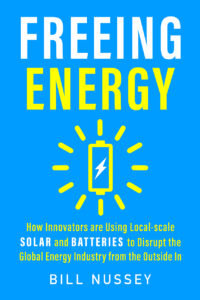This is the third article in our series on nuclear power. The first article covers the economics of nuclear and the second looks at the dangers of nuclear accidents.
Just how dangerous is radiation?
Radioactivity triggers a deep dread in most people. This isn’t surprising. Radioactivity is invisible and hard to detect. It is associated with birth defects. It can lie dormant in adults only to emerge as cancer decades later. In my interview with Nathan Myhrvold, the ex-CTO of Microsoft and co-investor with Bill Gates in Terrapower (a radically innovative new nuclear technology), he put this anxiety in perspective, “The world got the willies about nuclear in the 1970’s – the China Syndrome movie and Three Mile Island – perfectly timed.”

Ever since then, the public has taken a zero-tolerance stance towards radiation – many people believe there is no safe level of radiation. Obviously, radiation poses multiple risks, but the numbers below show that many of the concerns may be overstated.
- The average U.S. citizen encounters over 300 millirems per year of radiation from naturally occurring background sources as well as medical diagnostic equipment like X-ray machines.
- The U.S. Nuclear Regulatory Commission mandates that people living near nuclear power plants receive less than 0.01 millirem per year from the plant.
- By comparison, burning coal in power plants concentrates naturally occurring radioactive materials. The radioactive exposure near coal plants can be 100 times higher than nuclear.
- Health studies haven’t shown direct and immediate health impacts below 10,000 millirems. But of course, no one wants to be the lab rat that proves the threshold is lower. Actual radiation sickness doesn’t kick in until over 100,000 millirems of exposure. Studies show an increased risk of cancer in between these two numbers.
GET MONTHLY NEWS & ANALYSIS
Unsubscribe anytime. We will never sell your email or spam you.
The diagram below creatively compares radiation doses from numerous sources. It helps make the case, somewhat surprisingly, that nuclear power plants are one of the smallest sources of radiation in everyday life.

What happens when things go wrong?
On a day to day basis, the impact of radiation is small and manageable. But what about when things go wrong? How much radiation were people exposed to during Fukushima and Chernobyl?
- About 30 workers at Fukushima were exposed to 10,000 millirems of radiation.
- The highest recorded radiation levels in the community surrounding the Fukushima plant were measured at 4,000 millirems, but most of the area was measured well below this.
- The 600,000 or so workers who were sent in to clean up Chernobyl were exposed to an average of 16,500 millirems. This was far below the risk of radiation sickness but researchers have found many cases of cancer attributable to this exposure.
The Freeing Energy perspective
As I researched these articles on nuclear power, I was pleasantly surprised to learn that radiation was not as life-threatening as I had assumed. To put this in perspective, many experts point to the fact that all the long-term health impacts from all the nuclear disasters are dwarfed by the illness and premature deaths caused by fossil fuel particulate emissions.
Looking over our three articles so far, it’s clear that nuclear power is safer than most people think. Nuclear accidents are rare and technology is improving to ensure radiation remains contained. Even when radiation escapes and human health is put at risk, the extent of widespread illness is smaller than other sources of energy generation. But the cost of nuclear power is very high. And, in the next article, we’ll explore several areas of environmental impact that could raise the costs even higher.
Additional reading:
- The radiation and health impacts from the Chernobyl disaster
- The radiation and health impacts from the Fukushima disaster
If you’d like to make sure you don’t miss any of the updates in this series, please share your contact info below and we’ll send you the latest articles as they are posted.
[yikes-mailchimp form=”5″]




One Response
Another approach to “Neighborhood Nuclear” would be the fully developed, and thoroughly tested reactors used on new U.S.Navy aircraft carriers, This would make further use of research already paid for. How many homes would a carrier reactor serve?